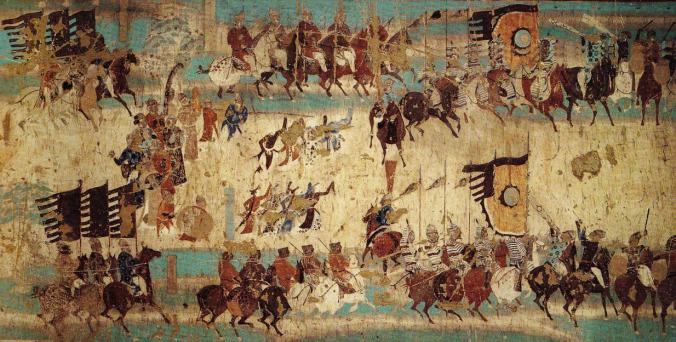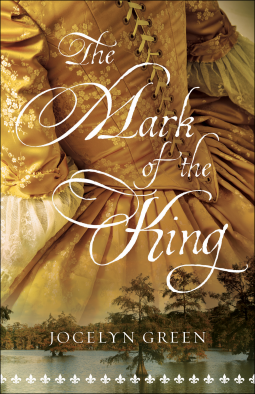Within the benefit of time, further research, and thought, I will rewrite this poem.
It appears now that the poem is about the exploits of General Li Guang (Western Han dynasty) who fought against the northern Xiongnu tribe and died 119 BC.

General Zhang Yichao’s victory over the Tibetan Empire, 848. Wikipedia image
Border Songs, One of four
Eagle feathers hang from his golden arrow
His silk flag flutters like the tail of a swallow.
One man, arising, gives a new order and
A thousand battalions, with one shout, Hi-yo!
塞 下 曲 四 首 之 一
鷲 翎 金 僕 姑
燕 尾 繡 蝥 弧
獨 立 揚 新 令
千 營 共 一 呼
Lu Lun was born around 748 in Shangxi Province. The one-character abbreviation for the province is 晋, Jin. This is also the fifth character in the title that precedes the poem. Thus, this may be a subtle reference to Lu’s home or to Lu Lun receiving his Jinshi degree.
The genre is called Frontier Poetry or Border Songs, which hearken back to happier times, when the Tang dynasty subjugated the Göktürks in the north or defeated the Tibetan armies in the west. China was at the height of its glory. The inclusion of the character 晋 (Jin) suggests that this is about a life or death struggle with the Göktürks.
This is the first in a series of four border songs by Lu Lun.
The Title塞 下 曲 四 首 之 一
I confess to being stymied by the title. It seems to begin with the two characters, 塞 下, meaning at the border, or underneath the border wall. Then, the next two characters, 曲 四, suggest the characters for song of four, which may be an allusion to an ancient Chinese board game and a life or death struggle. A simpler explanation is that there are four Beyond the Border Songs included in the Tang 300.
I do know that it ends with the two characters:
之 一, zhī yī, One out of a multitude.
Most anthologies of the Tang 300 poems give the title as “Border Songs” with the appellation of its number in the series. That seems unfair.
Lu Lun stresses the importance of one man out of a multitude.
An unnamed army general is mounted on his horse, and holds in his hand the golden arrow, the emblem of his authority from the emperor. Nearby, a servant holds the campaign flag. It flutters in the wind like the swallow tail. The two images – eagle and swallow – represent the general and his army.
The warriors wait expectantly. The general, gazing upon the enemy and then back at his warriors, gives his battle command, and thousands of warriors respond as one.
“Hi-yo. Go all out!”
The rhyming pattern of the poem is aaba (Gū hú lìng hū), but there is also a significant amount of internal rhyme. This is important to convey the poets meaning that an army must fight in unison.
Little is known of his career.
Lu Lu’s death is variously reported as circa 788 to 800.
More…





